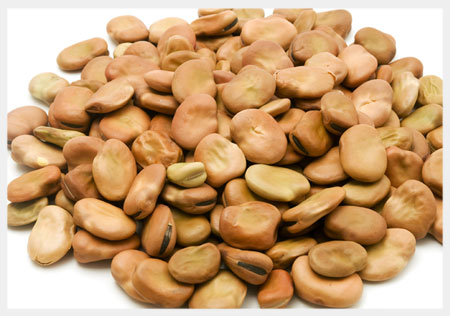Faba Beans

General Information
Faba bean:Faba bean originated in the Middle East and are now an important food crop in China and many Mediterranean and African countries. As Faba beans receive greater attention in the western word, because of the value in livestock nutrition and crop rotation, there will be an increasing export potential for Australian grain.
The Faba bean plant is tall (may grow to over 1m under optimum conditions), erect and multi-stemmed from basal branches. It has a well-developed taproot which produces an extensive fibrous root system. Plants can flower profusely and flowering may last for up to 5 weeks, depending on soil moisture and air temperature.
However, as few as 10-20% of flowers produce pods as flowers require cross-pollination. Faba bean is best suited to well-structured soils in medium to higher rainfall districts. They tolerate some waterlogging, compete well with a range of weeds and are relatively easy to harvest. Pods containing two to three seeds form from about 20cm above ground level and continue to nearly the top of the plant. A distinctive feature of the crop is that it turns black at maturity.
Broad bean:Broad bean is the same species as Faba bean (Vicia faba minor) and markets are also similar (i.e. mainly Middle East) but they have a wider Australian use, for example they are exported to Southern Europe and also South East Asia where they are roasted for use as snack food.
The Plant is virtually identical to the Faba bean but has a slightly longer growing season and is therefore suited to regions of slightly higher rainfall (>500mm) to achieve the seed size. Prime growing areas are the south-west of Victoria and south-east of South Australia. Like Faba bean, they tolerate water logging and turn black when harvested.
Nutritional Information
Faba bean and Broad bean are a good source of carbohydrate and protein while containing a low amount of fats. Starch is the principal carbohydrate component.
The crude protein content of Faba Bean and Broad bean ranges from 24 to 31 per cent.
Faba bean and Broad bean meet all adult human requirements for essential amino acids except methionine and tryptophan.
They also provide the recommended daily allowance of all essential minerals, except calcium.
They are highly digestible and have a metabolisable energy for pigs, poultry and ruminants similar to those of lupin, field pea and soybean meal.
